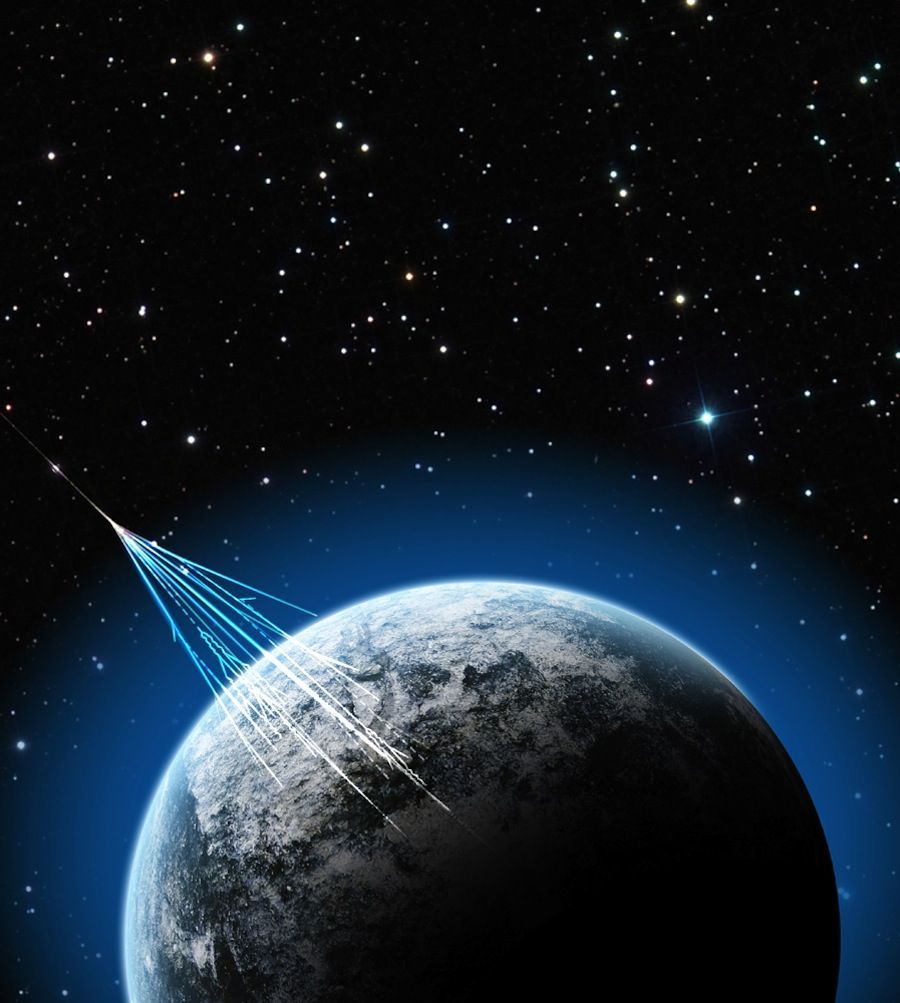It’s a bit of a stretch.
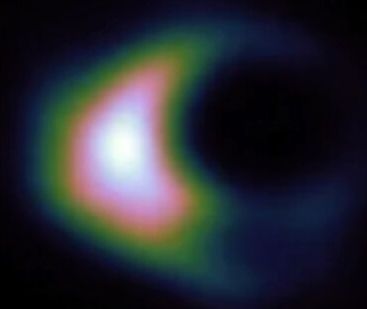

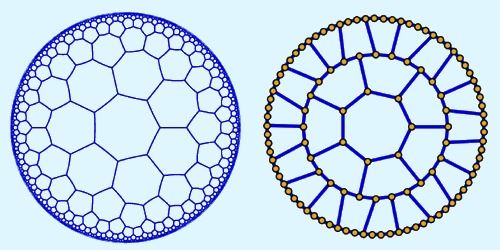
A heptagonal-lattice superconducting circuit, and the mathematics that describe it, provide tools for studying quantum mechanics in curved space.
According to John Wheeler’s summary of general relativity, “space-time tells matter how to move; matter tells space-time how to curve.” How this relationship plays out at the quantum scale is not known, because extending quantum experiments to curved space poses a challenge. In 2019, Alicia Kollár and colleagues at Princeton University met that challenge with a photonic circuit that represents the negatively curved space of an expanding universe [1]. Now, Igor Boettcher and colleagues at the University of Maryland, College Park, describe those experiments with a new theoretical framework [2]. Together, the studies offer a toolkit for studying quantum mechanics in curved space that could help answer fundamental questions about cosmology.
In a universe that expands at an accelerating rate, space curves away from itself at every point, producing a saddle-like, hyperbolic geometry. To project hyperbolic space onto a plane, Kollár’s team etched a centimeter-sized chip with superconducting resonators arranged in a lattice of heptagonal tiles. By decreasing the tile size toward the edge of the chip, the researchers reproduced a perplexing property of hyperbolic space: most of its points exist on its boundary. As a result, photons moving through the circuit behave like particles moving in negatively curved space.
This rendering shows the density of matter in the aftermath of two merged neutron stars, resulting in the formation of a black hole. (Credit: David Radice/Pennsylvania State University)
A new Physics Frontier Center at UC Berkeley, supported by the National Science Foundation, expands the reach and depth of existing capabilities on campus and at neighboring Lawrence Berkeley National Laboratory (Berkeley Lab) in modeling one of the most violent events in the universe: the merger of neutron stars and its explosive aftermath.
The Network for Neutrinos, Nuclear Astrophysics, and Symmetries (N3AS) Physics Frontier Center is led by Wick Haxton, a theoretical nuclear physicist in Berkeley Lab’s Nuclear Science Division, astrophysicist, and UC Berkeley physics professor.
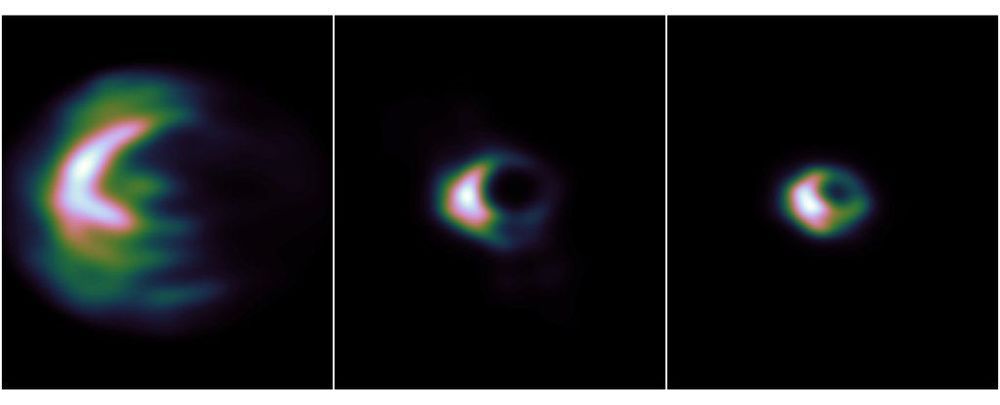
Last year, the astronomical community achieved an absolute wonder. For the very first time, the world collectively laid eyes on an actual image of the shadow of a black hole. It was the culmination of years of work, a magnificent achievement in both human collaboration and technical ingenuity.
And, like the best scientific breakthroughs, it opened a whole new world of enquiry. For a team led by astrophysicist Hector Olivares from Radboud University in the Netherlands and Goethe University in Germany, that enquiry was: how do we know M87 is a black hole?
“While the image is consistent with our expectations on what a black hole would look like, it is important to be sure that what we are seeing is really what we think,” Olivares told ScienceAlert.
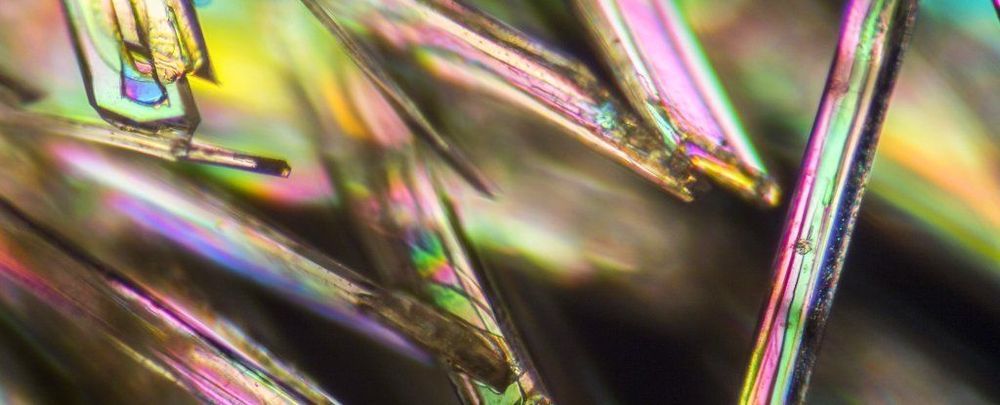
O,.o circa 2018.
Characteristics of mysterious time crystals have been found in the most unexpected place you’d ever think to look — a compound found in fertiliser and those crystal-growing kits you can buy for kids.
That compound is monoammonium phosphate (MAP), and the physicists from Yale who made the discovery are now scratching their heads, because this raises questions about how time crystals even form in the first place.
In normal crystals, the atoms are arranged in a fixed grid structure, like the atomic lattice of a diamond or quartz crystal. These repeating lattices can differ in configuration, but they don’t move around very much — they only repeat spatially, but not in time.
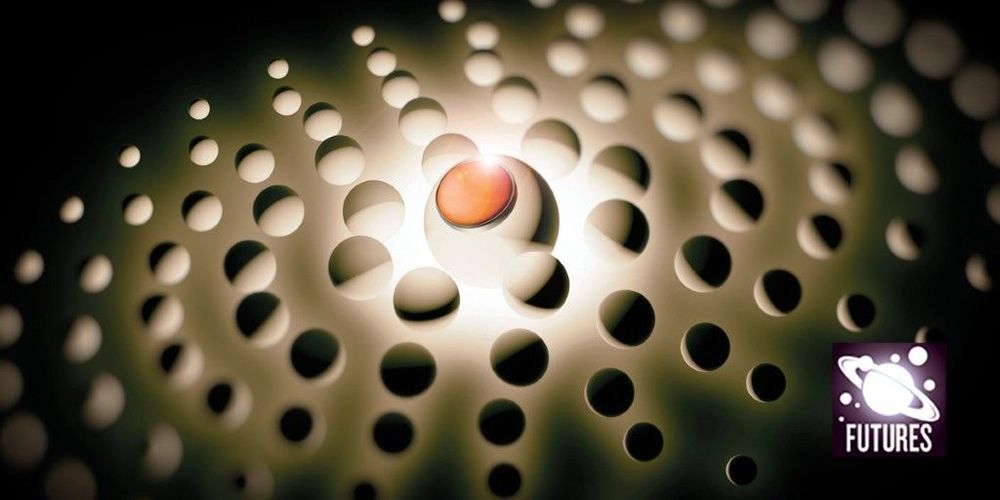
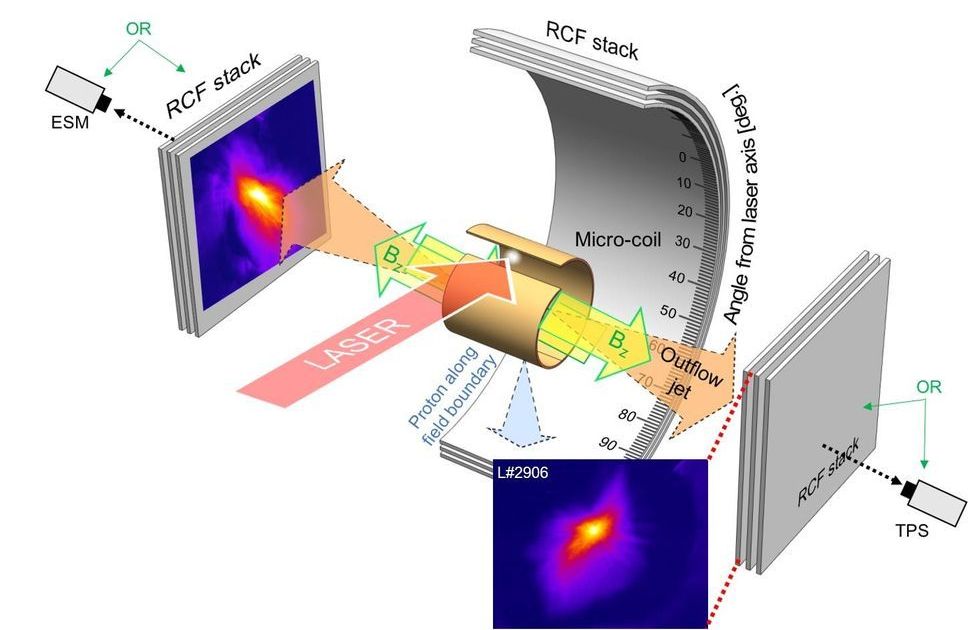
One of the world’s largest petawatt laser facility, LFEX, located in the Institute of Laser Engineering at Osaka University. Credit: Osaka University.
Laser Engineering at Osaka University have successfully used short, but extremely powerful laser blasts to generate magnetic field reconnection inside a plasma. This work may lead to a more complete theory of X-ray emission from astronomical objects like black holes.
In addition to being subjected to extreme gravitational forces, matter being devoured by a black hole can be also be pummeled by intense heat and magnetic fields. Plasmas, a fourth state of matter hotter than solids, liquids, or gasses, are made of electrically charged protons and electrons that have too much energy to form neutral atoms. Instead, they bounce frantically in response to magnetic fields. Within a plasma, magnetic reconnection is a process in which twisted magnetic field lines suddenly “snap” and cancel each other, resulting in the rapid conversion of magnetic energy into particle kinetic energy. In stars, including our sun, reconnection is responsible for much of the coronal activity, such as solar flares. Owing to the strong acceleration, the charged particles in the black hole’s accretion disk emit their own light, usually in the X-ray region of the spectrum.
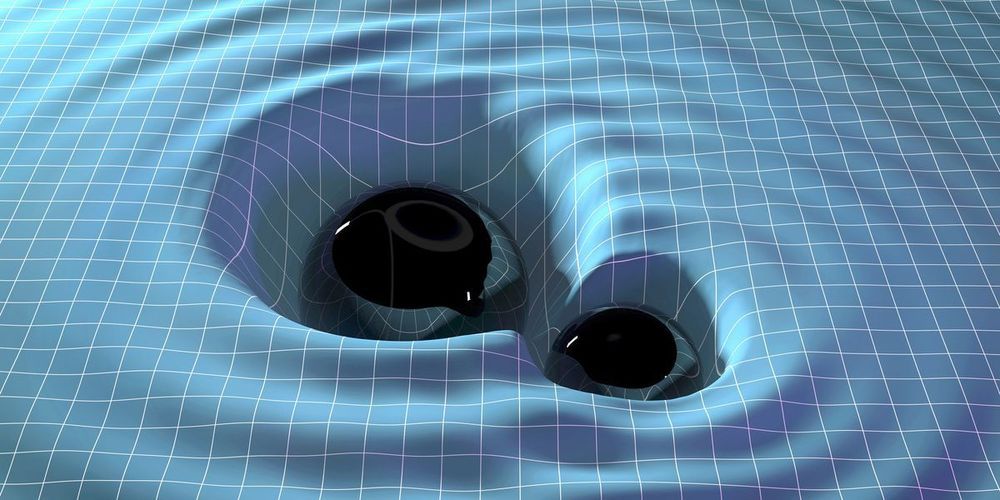
A tabletop gravity wave detector powered by a nanoscopic diamond could revolutionize particle physics, its creators say. And unlike existing detectors, it fits on a tabletop.
In a preprint paper, researchers describe a small device with the modified diamond in the center. The diamond is prepared by trading one carbon for one nitrogen, which opens a critical electron gap where a new and functional electron is inserted.
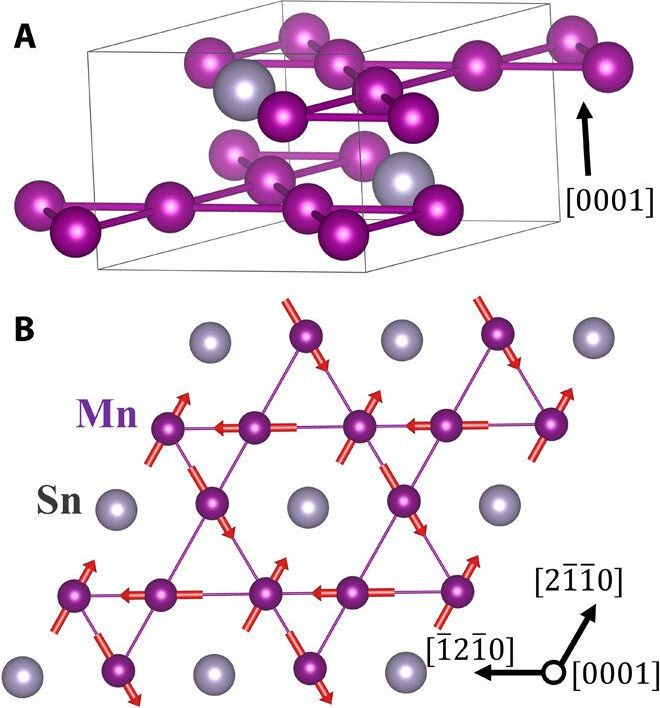
Emerging quantum materials can be defined by topology and strong electron correlations, although their applications in experimental systems are relatively limited. Weyl semimetals incorporating magnetism offer a unique and fertile platform to explore emerging phenomena in developing topological matter and topological spintronics. The triangular antiferromagnet Mn3Sn exhibits many exotic physical properties as an antiferromagnetic (AFM) Weyl semimetal (WSM), including an attractively large spontaneous Hall effect.
The spontaneous Hall effect was discovered more than a century ago and understood in terms of time-reversal symmetry breaking by the internal spin structure of antiferromagnetic, ferromagnetic or skyrmionic (small swirling topological defects in the magnetization) forms.
In a new report now published on Science Advances, Durga Khadka and a team of scientists in physics, materials science, neutron research and engineering in the U.S. reported the synthesis of epitaxial Mn3+x Sn1−x films with compositions similar to bulk samples. When they replaced the tin (Sn) atoms with magnetic manganese (Mn) atoms in the samples, they noted the Kondo effect; a celebrated example of strong correlations to emerge, then develop coherence and induce a hybridization energy gap. The process of magnetic doping and gap opening facilitated rich extraordinary properties for the new materials.
